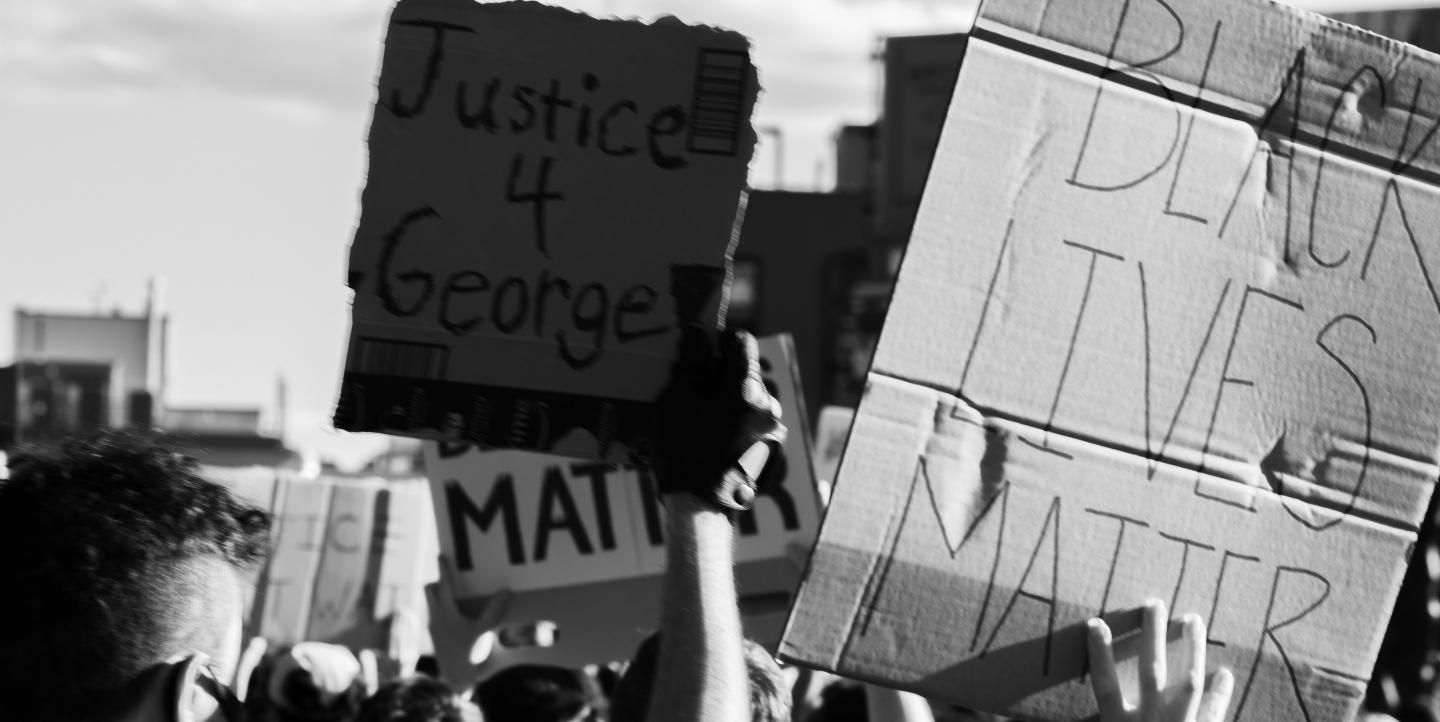Physical threats and attacks on journalists, all too familiar in many countries around the world, have not been as common in the U.S. until now.
As reporters cover protests in U.S. cities that have followed the police killing of 46-year-old George Floyd, a black Minneapolis resident, police in many cities are cracking down. Journalists have reported more than 300 press freedom violations related to the protests, according to the U.S. Press Freedom Tracker. Police appear to be targeting journalists and people of color, reporters said during an ICFJ webinar Friday.
“I think that there is no way you see a photographer with pro gear lining up a shot, wearing my credentials around my neck,” said freelance journalist Linda Tirado, who lost sight in her left eye after Minnesota State Police shot her with a foam bullet May 29.
“It was clear I wasn't with protesters,” she said. “I was [part of the] working media. Either they targeted me or I just happened to catch a round that they were indiscriminately firing into a crowd.”
[Read more: Tips for reporting on anti-police violence protests in the U.S.]
Detroit city’s police sprayed tear gas into the crowd of protesters that Free Press reporter Branden Hunter was covering. He ran to meet up with his colleagues. “While I'm wiping the tear gas out of my eye, you can see in the video where the [Detroit Police Department] cop comes up with a shotgun and points it at me, telling me to move,” he said. He frantically showed his press badge and said, “‘I’m press, I’m press!’ and his colleague said the same thing. “Two seconds later, they threw another canister of tear gas at us, and we had to run.”
Hunter said he believes the attack was also racially motivated. “I fit the description of the protesters,” he said. “They were young African-American men from Detroit. I'm a young African-American man from Detroit...You couldn't tell me apart from them, except for my press badge. For me, that explains why he walked past everybody else — even though we were screaming ‘press’ — and pointed a gun at me.”
Hunter and Tirado joined freelance Kashmir-based reporter Ahmer Khan and Maria Salazar Ferro, emergencies director for the Committee to Protect Journalists, for an ICFJ panel discussion Friday about the attacks on American journalists, the implications for reporters in other countries, and how journalists can stay safe. ICFJ Vice President for Content and Community Patrick Butler moderated the discussion.
These attacks on journalists in the U.S. streets, once the beacon of press freedom, may lead to deteriorating conditions for reporters across the world, the panelists said. “I'm really afraid to see that it's going to repeat itself in many other countries because the U.S. is a superpower,” said Khan, who has been under attack for reporting on the Kashmir conflict. “If this happens there (in the U.S.) it’s going to happen anywhere….I don't know what's going to happen to the rest of the world and to the rest of the journalists.”
Police “came to my door twice in the middle of the night when I was reporting in Assam,” covering the Indian law limiting citizenship for non-Hindus, said Khan, who is Muslim.
Tirado urged journalists to remain committed to tell important stories as they come under attack. “The point of attacking journalists is to try and dissuade us from doing that work,” she said. “I think that the more fiery we are about saying you cannot stop us from doing this work, the [sooner] press will be free and we will come back from injuries. “I think that is potentially the best thing that we could do for the field."
The panelists gave valuable advice on how reporters can stay safe covering protests:
Assess risks in advance
Ferro: “Conduct a risk assessment. Have a conversation with your reporting team, with the editor about the risk and how to mitigate it and what you can do if something goes wrong. The more prepared you are, the better you're going to be able to mitigate whatever happens.”
Take care of your emotional health
Tirado: “I have often told new freelancers, get a therapist after your first couple of runs. You need tools to process through what you're seeing. Once you've done it a few times, if you feel like you already know how to de-escalate yourself when you get home...then you can just put those practices in on your own.”
Ferro: “We do think of [psychological trauma] as a safety component... It's something that you should be preparing for and know that you will likely be affected. If you are affected, you can make decisions that can compromise your physical safety or that of the people you're working with. So always think about how it's going to affect you, and how you will respond and what tools you will need and have."
[Read more: Mental health tips and resources for journalists]
Think about digital security
Ferro: “We have seen a lot of requests for trauma support for people who have been victims of online harassment or online threats. It is incredibly common in the United States, particularly for female journalists. And we have already been seeing it with the protests. The very first case that I believe we documented around the protest was a journalist who posted the incident online and was immediately doxxed. So while you're thinking about physical security and safety, when you're going out in the field, you have to also be thinking about your digital security. Think about the equipment that you're bringing, what information you have in that equipment and how you’re protecting it.
Think about your online footprint or your online hygiene. Know what personal information is there and know that all your accounts have been protected."
Tirado: “We need to become a lot more tech savvy as a profession and understand the laws a lot better, particularly in an American context. Turn off your face recognition, turn off your thumb recognition, lock your codes with a password, wipe your phones before you go out or get a burner phone that you can record from so that if it's lost or destroyed, you're not losing or giving away information. Use Signal, learn to use peer-to-peer encryption. Use two-factor authentication for everything.”
When you’re at a protest:
Tirado: Develop a strong network with other freelancers “so that when you do get on location, you're within people that you've worked with before. You know how they work. You can keep each other safe, watch each other's backs.”
Khan: “When I go out to shoot film or pictures, I carry a lot of dummy cards for my camera...when you get caught in a checkpoint by the police, they open your camera and delete the entire footage,” he said. “We always carry extra sets of memory sticks and also hard drives.”
Other resources mentioned during this webinar:
- IJNet’s Tips for reporting on anti-police violence protests in the U.S.
- The Reporters’ Committee for Freedom of the Press’ Legal Defense and FOIA Hotline. “Write their number on your arm if you’re going out to cover a protest,” Ferro said.
- Dart Center for Journalism and Trauma offers courses, webinars and online resources such as How to Safely Cover Street Protests. The Committee to Protect Journalists has published a safety kit and safety advisories.
- A Culture of Safety Alliance offers training, insurance and advice for freelance journalists.


